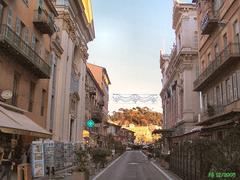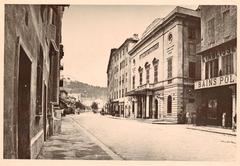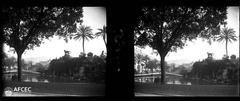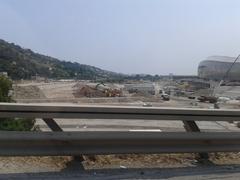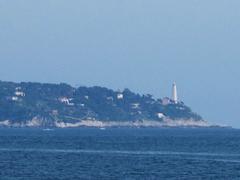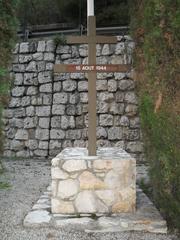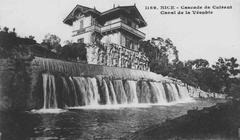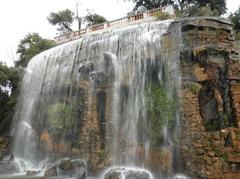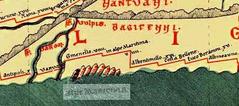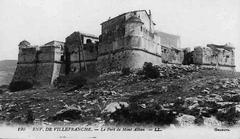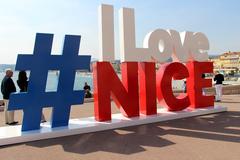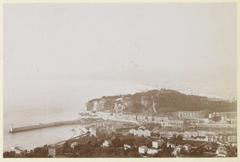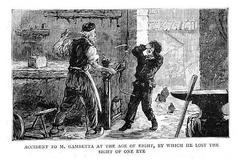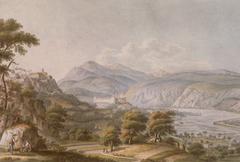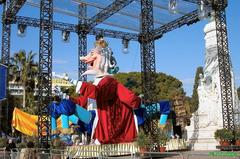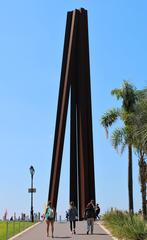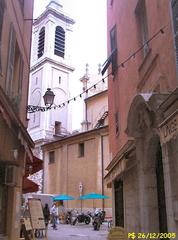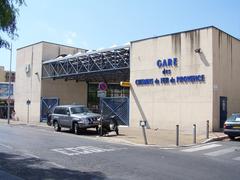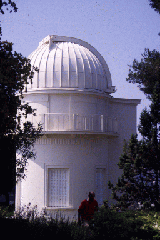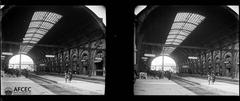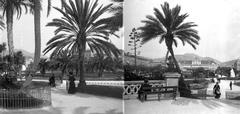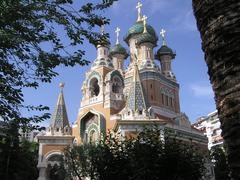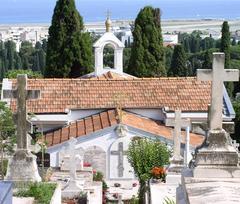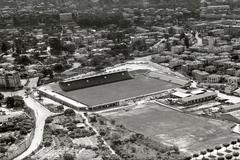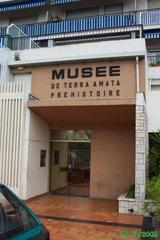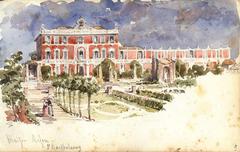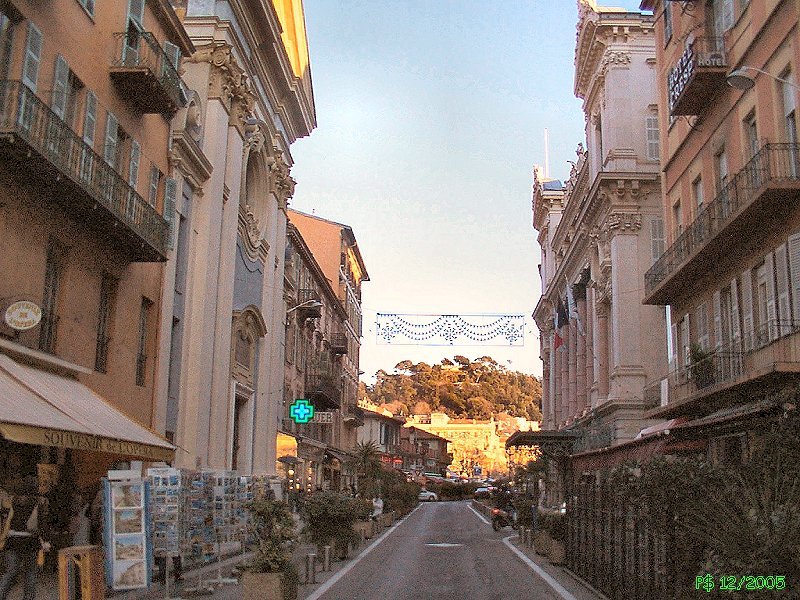
Opéra de Nice: Visiting Hours, Tickets, and a Guide to Nice’s Historical Sites
Date: 14/06/2025
Introduction
Nestled in the vibrant heart of Nice’s historic district, the Opéra de Nice Côte d’Azur is a jewel of the French Riviera. From its humble beginnings as an 18th-century wooden theater to its current status as a Belle Époque masterpiece, the Opéra de Nice stands as a beacon of cultural heritage, architectural brilliance, and artistic excellence. This guide provides a detailed overview of the opera’s storied past, practical visitor information, performance schedules, and recommendations for exploring surrounding historical sites in Nice.
For official details and the most up-to-date information, consult the Opéra de Nice official website and the Explore Nice Côte d’Azur tourism portal.
Table of Contents
- History and Cultural Significance
- Visiting the Opéra de Nice
- Nearby Historical Sites and Attractions
- Frequently Asked Questions (FAQ)
- Visual Highlights and Media
- Summary & Recommendations
- References
History and Cultural Significance
Origins and Early Development
The Opéra de Nice traces its origins to 1776, when Marquess Alli-Maccarani established a modest wooden theater. By 1787, it had evolved into the “Théâtre Royal,” quickly becoming a social and cultural hub for the city’s elite. The 1820s marked a turning point, as the city purchased and rebuilt the theatre, culminating in a grand inauguration in 1828 with Pacini’s Il Barone di Bolsheim. This period cemented the theater’s place as a center for lavish events and royal patronage (en.wikipedia.org).
The 1881 Fire and Rebirth
Tragedy struck in 1881 when a fire, triggered by a gas explosion during Donizetti’s Lucia di Lammermoor, claimed over 200 lives and destroyed the building (explorenicecotedazur.com). The city responded with determination, launching a national competition for the new design. François Aune, a pupil of Gustave Eiffel, emerged as the winner, with his vision approved by Charles Garnier, the celebrated architect of the Paris Opéra (archiseek.com). The new opera house opened in 1885 with Verdi’s Aida, ushering in a new era of artistic splendor (opera-nice.org).
Architectural Highlights and Innovations
The current building is a Belle Époque marvel, notable for its Italian horseshoe-shaped auditorium, which seats over 1,000 spectators. The richly adorned interior features gilded balconies, a monumental crystal chandelier symbolizing the sun, and a ceiling fresco by Emmanuel Costa depicting Apollo and Aphrodite. The façade, with its La Turbie stone, red Verona columns, bronze Corinthian capitals, and statues by Monetta, is equally striking (opera-nice.org). The theater’s design integrates advanced 19th-century technology, such as innovative iron structures, improved ventilation, and enhanced fire safety measures (nice.city-life.fr).
Artistic Heritage and Symbolism
Since its reopening, the Opéra de Nice has been at the forefront of cultural life in Nice, hosting French premieres and fostering collaborations with renowned artists and directors. Today, it is home to the Ballet Nice Méditerranée and the Nice Philharmonic Orchestra, offering a diverse program of operas, ballets, and concerts (music-opera.com). Decorative motifs throughout the building, including musical instruments, laurel wreaths, and Mediterranean flora, celebrate the universality of the arts and the region’s identity (Nice Tourism).
Visiting the Opéra de Nice
Visiting Hours
- Box Office: Open Tuesday to Saturday from 10:00 AM to 5:00 PM; on Sundays with performances, it opens one hour before the show. Closed on Mondays.
- Performance Nights: Doors open one hour prior to performances.
- Tours: Guided tours are available by appointment and during select times; check the official website for current offerings.
Ticketing and Accessibility
- Ticket Purchase: Tickets can be bought online via the Opéra de Nice website, at the box office, or by phone (+33 (0)4 92 17 40 40).
- Pricing: Tickets range from €5 to €90, with discounts for youth under 30, group rates, season subscriptions, and family packages.
- Accessibility: The venue is fully accessible to those with reduced mobility. Contact the box office in advance for assistance and accommodations.
Guided Tours and Visitor Tips
- Guided Tours: Explore the theater’s history, architecture, and backstage areas with expert-led tours (typically €10–15). Tours offer access to usually restricted areas and provide in-depth insights into the building’s design and operation.
- Dress Code: Smart casual attire is recommended, with formal wear appreciated for gala events.
- Arrival: Arrive early to enjoy the surroundings and the opera’s impressive exterior.
Performance Schedule (2024–2025)
The 2024–2025 season features a robust lineup of operas, ballets, and concerts, including:
- Carmen (Bizet) – June 2025
- The Barber of Seville (Rossini) – May 2025
- Juliette ou la Clé des songes (Martinů) – March 2025
- The Magic Flute (Mozart) – January 2025
- Edgar (Puccini) – November 2024
The season typically runs from September to June. For the latest calendar, visit the Opéra de Nice calendar.
Dress Code and Visitor Experience
- Attire: No strict dress code, but smart casual or formal wear is customary, especially for premieres and gala nights.
- Performance Duration: Most productions last 2.5–3 hours, including intermissions.
- Refreshments: Bars and lounges are available during intermissions.
Nearby Historical Sites and Attractions
Enhance your visit by exploring other nearby Nice historical sites:
- Promenade des Anglais: Iconic seaside boulevard.
- Place Masséna: Central square with striking architecture.
- Vieux Nice (Old Town): Vibrant district with the Cours Saleya market and Palais du Sénat.
- Castle Hill (Colline du Château): Offers panoramic city views.
The opera’s central location makes it an ideal starting point for a broader exploration of Nice’s rich heritage (explorenicecotedazur.com).
Frequently Asked Questions (FAQ)
What are the Opéra de Nice visiting hours?
The box office is open Tuesday to Saturday, 10:00 AM–5:00 PM. Guided tours and performance times vary; check the official website for details.
How do I purchase tickets?
Tickets can be purchased online, at the box office, or by phone.
Is the venue accessible for people with disabilities?
Yes, the Opéra de Nice is fully accessible. Contact the box office in advance for accommodations.
Are guided tours available?
Yes, guided tours can be booked in advance and offer backstage and architectural insights.
Can I take photographs inside?
Photography is allowed in public spaces, but not during performances.
What are some must-see nearby attractions?
The Promenade des Anglais, Place Masséna, and Vieux Nice are all within walking distance.
Visual Highlights and Media
- Opéra de Nice façade at sunset (alt: “Opéra de Nice façade showcasing Belle Époque architecture”)
- Interior view of the main hall (alt: “Opéra de Nice Italian horseshoe style main hall with chandelier”)
- Ceiling fresco by Emmanuel Costa (alt: “Ceiling fresco depicting Apollo and Aphrodite inside Opéra de Nice”)
For virtual tours and photo galleries, visit the official Opéra de Nice website.
Summary & Recommendations
The Opéra de Nice is a testament to the resilience, creativity, and cultural richness of the French Riviera. Its Belle Époque architecture, vibrant performance schedule, and central location make it a must-visit for anyone interested in history, art, or music. Plan your visit by checking current schedules, securing tickets in advance, and considering a guided tour for a deeper appreciation of this iconic landmark. Enhance your experience by exploring the nearby historical sites that make Nice a premier destination for culture and heritage.
Download the Audiala app for seamless ticket purchases and personalized event recommendations, and follow Opéra de Nice on social media for updates and behind-the-scenes content.
References
- Official Opéra de Nice Website
- Explore Nice Côte d’Azur Tourism Portal
- Opéra de Nice - Wikipedia
- Nice City Life Cultural Guide
- Nice Riviera Visitor Information
- Music & Opera Venue Highlights
- Nice Tourism Historical Edifices
